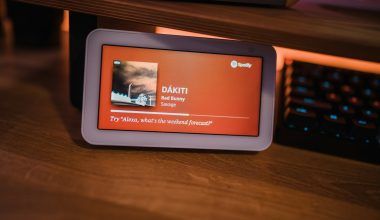If you’ve been dreaming of sharing your music with the world, there’s never been a better time. With streaming platforms like Spotify, Apple Music, and Amazon Music dominating the industry, artists have an incredible opportunity to reach a global audience. But how do you actually Distribute your music on all streaming platforms step-by-step? Let’s break it down into simple, actionable steps so you can focus on what matters most—your music.
Why Should You Distribute Your Music on Streaming Platforms?
Distributing your music on streaming platforms isn’t just about getting heard; it’s about building a connection with listeners all over the world. These platforms make it easier for fans to discover your work, save your tracks, and share them with others. Plus, you can earn revenue every time your music is streamed. Who wouldn’t want that?
Now, let’s dive into how you can get started.
Step 1: Get Your Music Ready
Before you distribute your music, make sure it’s polished and professional. This means:
- High-Quality Recordings: Make sure your tracks are recorded and mixed professionally. If you’re doing it yourself, invest in good recording equipment and software.
- Proper File Format: Most platforms require WAV files (16-bit or 24-bit). Double-check the format before uploading.
- Album Artwork: Your cover art matters more than you think. It’s the first thing people see, so make it eye-catching and relevant to your music.
- Metadata: This includes your song title, artist name, album name, and genre. Double-check everything for accuracy.
Taking these steps ensures your music stands out when it hits the streaming platforms.
Step 2: Choose a Music Distribution Service
You can’t directly upload your music to most streaming platforms. Instead, you’ll need a music distribution service. These services act as a bridge between you and platforms like Spotify or Deezer. Some popular options include:
- Delivermytune: Affordable and beginner-friendly.
- TuneCore: Offers detailed analytics and control over your royalties.
- CD Baby: A one-time payment service with extensive platform coverage.
- Amuse: Great for artists on a budget, as they offer free plans.
- Ditto Music: A solid choice for indie artists.
Research these options to find the one that best fits your needs. Many of them offer additional features like royalty collection and marketing tools.
Step 3: Sign Up and Upload Your Music
Once you’ve chosen a distributor, it’s time to create an account. Here’s what you’ll typically need:
- Your Personal Information: Including payment details for royalty distribution.
- Music Files: Ensure they’re in the correct format and high quality.
- Artwork: Upload your album or single cover art.
- Release Date: Decide when you want your music to go live.
After uploading your music, most distributors will run a quick quality check to ensure everything meets platform requirements. If something is amiss, they’ll let you know so you can fix it.
Step 4: Select the Streaming Platforms
When uploading your music, your distributor will ask which platforms you want to target. The good news? Most distributors cover all major platforms, including:
- Spotify
- Apple Music
- Amazon Music
- YouTube Music
- Tidal
- Deezer
- Pandora (available in certain regions)
Make sure to check all the boxes. The more platforms your music is on, the more chances you have to reach new listeners.
Step 5: Set Your Royalty Preferences
Many distribution services allow you to customize how royalties are paid out. Here’s what to keep in mind:
- Splits: If you’re collaborating with other artists, decide how you’ll split the revenue.
- Payout Thresholds: Some services only pay royalties after you’ve earned a minimum amount.
- Payment Methods: Choose the method that’s most convenient for you, such as PayPal or direct deposit.
Getting your royalty settings right ensures there are no hiccups when the money starts rolling in.
Step 6: Promote Your Music
Once your music is live, it’s time to promote it. Here are some effective ways to do that:
- Social Media: Share snippets of your tracks and links to your streaming profiles.
- Playlists: Submit your music to popular playlists. Many curators accept submissions through social media or websites.
- Music Videos: Create engaging visuals for your tracks and upload them to YouTube.
- Email Marketing: Build an email list of your fans and let them know when your music is out.
Promotion is key to building a loyal fanbase and maximizing your streams.
Step 7: Monitor Your Performance
Most distribution services provide detailed analytics. These can help you understand:
- Who’s Listening: Get insights into the demographics of your audience.
- Where They’re From: See which countries or cities are streaming your music the most.
- What’s Working: Identify your most popular tracks and focus on creating similar music.
Use these insights to tweak your marketing strategies and improve your reach.
Final Thoughts
Distribute your music on all streaming platforms step-by-step is a game-changer for any artist. It might seem overwhelming at first, but by following these steps, you can make the process smooth and stress-free. Remember, consistency is key. Keep creating, keep sharing, and watch your audience grow.
Now it’s your turn. Start distributing your music today and let the world hear what you’ve got! Who knows? Your next track could be the one everyone’s streaming on repeat.
Related Articles:
For further reading, explore these related articles:
For additional resources on music marketing and distribution, visit DMT RECORDS PRIVATE LIMITED.






